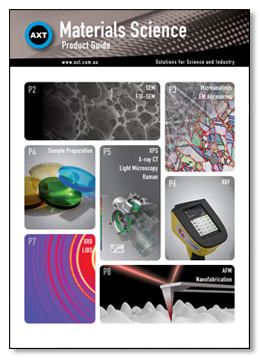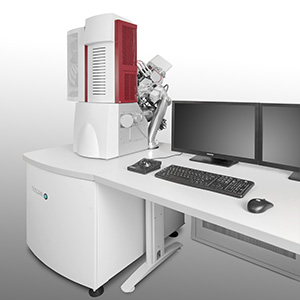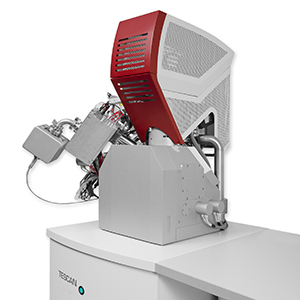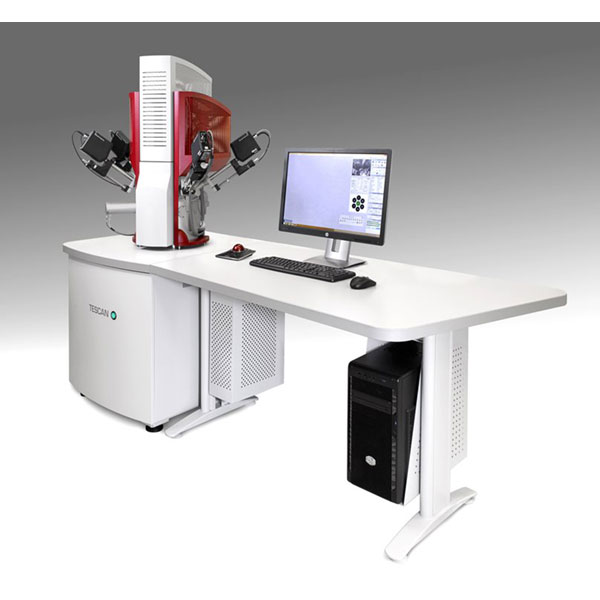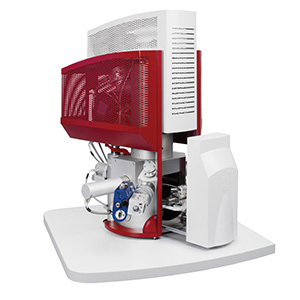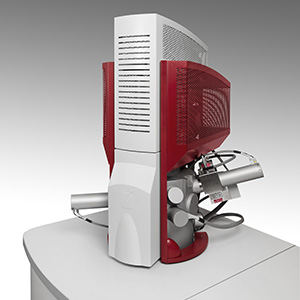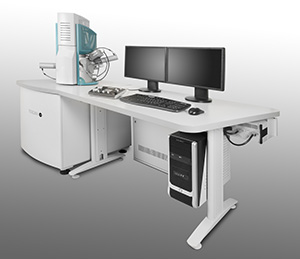TESCAN SEM Detectors
Overview
Tescan offer a range of different SEM detectors to compliment their scanning electron microscopes. They will add additional analytical capabilities to the instrument. These will allow the user to gain a better insight into the properties and behaviour of their samples whether they be biological, semiconductor, materials or composites or coatings.
Whether you are looking at the surface, the bulk or an interface, the choice of an appropriate detector can yield more information about the chemistry, composition and interactions that may be taking place in your samples.
Some of the detectors that are available include:
- Secondary Electron (SE) Detectors
- Low Vacuum Secondary Electron TESCAN Detector (LVSTD)
- Backscattered Electron Detectors (BSE)
- Cathodoluminescence Detectors (CL)
- Scanning Transmission Electron Microscopy Detector (STEM)
- Secondary Ion TESCAN Detector (SITD)
- Electron-Beam-Induced Current Detector
Secondary Electron Detectors (SE)
Secondary electrons provide valuable topographical information about a sample. SE detectors are included as standard equipment on all TESCAN SEMs.
TESCAN use Everhart-Thornley type SE detectors fitted with a YAG (yttrium aluminium garnet) scintillation crystal that provides superior speed, efficiency and lifetime performance. The detector has a positively charged grid on the front to attract and accelerate low-energy secondary electrons, which it focusses onto the scintillator.
In-Beam Secondary Electron Detectors
In-beam SE detectors are high efficiency versions of SE detectors. They combine an SE detector with a set of elstat/elmag lenses and are placed in the objective lens of FE-SEMs to provide high resolution imaging at low kV.
Low Vacuum Secondary Electron Tescan Detectors (LVSTD)
LVSTDs have been developed, built and patented by Tescan and are unique to TESCAN SEMs and are ideally suited to examination of non-conducting samples under low vacuum conditions.
They consist of an Everhart-Thornley detector located in a separate detector chamber with a dedicated small turbo molecular pump.
New LVSTDs working up to 1000Pa are available as an option for the VEGA and have an extended low vacuum mode up to 2000Pa. LVSTDs are also available that work up to 1000Pa and incorporate a Water Vapour Inlet System permitting examination of hydrated samples at temperatures above zero in their natural state.
Backscattered Electron Detectors (BSE)
BSEs provide compositional information about a sample based on their atomic number. TESCAN provide two types of BSEs:
- YAG scintillation crystal-based
- 4-Quadrant semiconductor (solid-state) BSE detector
YAG Scintillation Crystal-Based BSEs
TESCAN manufacture their own first class YAG scintillators which allow their BSEs to provide very fast and efficient solutions which will enhance your imaging quality.
YAG-based BSEs are available in fixed or retractable models, with retractable models coming in manual or fully motorised variants. BSE detectors come standard with all variable pressure SEMs (Univac) and LYRA systems (both high and low vacuum models).
Advantages of YAG-based BSE detectors include:
- High imaging rate
- High sensitivity and resolution in atomic number (0.1Z)
- High temperature stability (no signal drift)
- Low noise, producing super-clear images
- Unaffected by infrared (IR) light used by the TESCAN Chamber scope
- Ideally suited for low vacuum observations
In-Beam BSE Detector
FE-SEMs can be equipped with in-lens BSE detectors, called In-Beam BSE which open up new opportunities for electron microscopists. Using these detectors, it is now possible to take images at very short working distances, while the space below the objective is made available for other detectors.
When combined with a BSE, both low-angle and high-angle backscattered electrons can be detected at the same time. This provides additional compositional contrast to better differentiate materials with similar atomic numbers.
BSE 4-Quadrant Semiconductor Detector
The SEM is able to process data separately from all 4 quadrants and to mix them together to produce a single image. The TESCAN 4-quadrant BSE has been designed so that it can produce compositional and topographical contrast in conjunction with advanced imaging for 3D reconstructions.
Cathodoluminescence Detectors (CL)
Cathodoluminescence detectors detect photons that a sample emits as the result of its interaction with an electron beam. These photons provide information about trace elements present in materials and reveal which can reveal compositional information, which provide insights into the inner structure of the sample.
TESCAN produce two different types of CL detectors:
- 1. Panchromatic CL detectors
- 2. Color CL detectors
Software for each type of CL detector is built into the SEM software, hence no external scanning is required.
Panchromatic CL Detectors
TESCAN offer two types of Panchromatic detector, the basic version with spectral range 350-650nm and an optional version scanning a broader range of 185-850nm. The standard Panchromatic CL is available in two variants, the standalone or exchangeable BSE/CL.
Color CL Detector
The Color CL detector has a spectral range of 350-850nm. It acquires red, blue and green signals simultaneously and combines these colour channels to produce a live colour image of the scanned region. This system reveals more information about the structure and composition of a sample when compared to a classic CL detector.
Scanning Transmission Electron Microscopy Detector (STEM)
STEM technology developed by TESCAN allows the operator to produce measure transmitted electrons to produce images of a sample that are comparable to those from a TEM, with all the convenience of an SEM.
As an integral part of the SEM, the STEM detector has been designed to be controlled using the in-built microscope software.
Secondary ION Tescan Detector (SITD)
TESCAN can provide a Secondary Ion TESCAN Detector for FIB-SEMs that measures a new type of signal from the simultaneous secondary electron and secondary ion emissions. The secondary ions are emitted from a thin surface layer, about one tenth the thickness of the layer that produces ion induced secondary electrons. This surface sensitive technique is able to detect oxides on the sample surface.
Electron-Beam-Induced Current Detector (EBIC)
EBIC detectors are available for researchers looking to perform imaging using electron beam induced current for checking such things as semiconductor P-N junctions, solar cells and other solid state devices.

